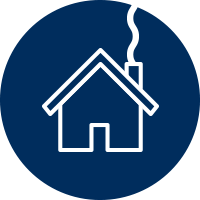Helicopter Redeye
Commercial Helicopter Pilot Services
Flying The London Helicopter Routes
Flying the London helicopter routes is one of the more challenging and exciting aspects of flying a helicopter in UK airspace. The process demands a high degree of flying accuracy, sharp radio work and a forward thinking and flexible mentality.
The heliroutes are defined paths used to allow single engine helicopters to navigate the densely populated British capital safely and to maintain separation within London class D controlled airspace.
Flying with a pilot or instructor who knows the airspace is sensible, as the workload can become very intense at busy times. This is especially true for the RT. It is not uncommon to be bounced back and forth between Heathrow radar, City tower, Battersea Tower, Heathrow tower and Northolt approach if you're flying the length of the lanes at peak times.




Entry to the heliroutes should be treated much the same as entry to any other controlled airspace. However, your requested routing will be a list of heliroutes in addition to a zone entry and exit point. For example: “G-REYE, request helilanes routing: zone entry via the Lee valley, westbound H4, H3, H9 with a Heathrow crossing then zone exit at Northwood”. Having this written on a kneeboard can be helpful to reel off quickly when asked for it.
Having the ‘Helicopter Routes in the London Control Zone’ CAA chart is a must for planning your route, however you will likely find that the size of this chart precludes its use in the cockpit for your entire journey. Crafty map folding or having two map copies that are folded to cover different parts can be a good solution. It is a good idea to use some kind of GPS in addition to your charts for accuracy: Skydemon or Runway HD are two favourites.
A tip for Skydemon users: switch your map to ‘airways mode’ (located in the bottom right mapping menu) but make sure in the options that ‘helicopter routes’ are enabled. This vastly declutters the map and will allow you to be able to see the details of the VRPs and standard operating altitudes along the route without the billions of inevitable drone NOTAMS getting in the way.
The heliroutes are littered with VRPs which are used by ATC to establish your clearance limit based on other fixed wing and helicopter traffic. For example, you may be cleared to route westbound along H4 with a clearance limit of London Bridge. This means, if not re-cleared to a further clearance limit, you will be expected to hold at this point which can be slightly tight in certain spots. A solid technique is to do a slow orbit doing your best to minimize blade slap/ nuisance noise and, of course, maintain your height. An OGE hover may be possible but, as always, beware vortex ring and overpitching.
The routes are not only precise paths across the ground, but also are governed by so called ‘standard operating altitudes’ (SOAs). These are the altitudes you will be expected to fly at or not above (depending on which route you are taking) unless your clearance states otherwise. It is worth noting that although you are exempt from the 1000ft rule when flying the heliroutes you are not immune from the 500ft rule (no closer than 500ft to any person, vessel, vehicle or structure). Pinch points like passing The Shard and the London Eye must be planned carefully so as not to break any low flying rules.



What about at night...?
Heathrow Crossing:
It is highly advisable to only attempt this for the first time with an experienced instructor/ pilot who is familiar with the procedures.
The routing to cross Heathrow will depend on if runway 09 or 27 is in use. You must familiarize yourself with these exact routings by reviewing the Heathrow AIP (found on the NATS website) and the helilanes chart. Be prepared to be held between the arrival and departure runways (e.g. at the Virgin Hangar between 27L and 27R) and be given a very specific ‘cross behind’ instruction to sequence in with the stream of landing traffic.
You will be asked if you are familiar with the Heathrow crossing procedure before being given permission to cross, this is where having an experienced pilot on board with you will really aid in making things run smoothly and allow you to answer: Yes!


